How to Create a Web Directory in WordPress
Are you trying to create a business web directory? Web directories are a famous online commercial enterprise idea, that permits you to monetize your websites with user-generated content.
Angie`s listing is a famous web directory that facilitates house owners to discover dependable contractors and carrier providers. They`re really well worth over nine billion dollars.
Whether you`re trying to create a niche web directory to make cash online, or a companions directory to list your vendors, you may without problems do it in WordPress.
This article will show you how to easily create a web directory in WordPress. Learn how to accept payments for premium web directory listings.

What is a Web Directory?
A web directory is like a catalog that lists companies or individuals with details such as contact information, services, and features.
The web directory allows users to browse a catalog of links organized by subject, category, and area of interest. A perfect example of a web directory is a yellow page or Angie’s list.
These are most commonly used to help people find the place or service they are looking for.
Another example of a web directory is Yelp. This allows you to find great local businesses such as restaurants, dentists, hairdressers, and doctors.
There are several web directory themes for WordPress that you can use to create web directories, but we don’t recommend them as they will forever be tied to the theme.
This is the reason for displaying only plugin methods which can be used in any theme.
Now let’s see how to create a web directory in WordPress.
Method 1: Creating a WordPress Directory with Formidable Forms:
Formidable Forms is the most advanced WordPress form builder plugin on the market. This will help you create advanced forms such as surveys, payment forms, registration forms, as well as basic contact forms for your WordPress site.
The plugin has a unique feature called “views” that allows you to view all the data submitted by the form on the front end of your website. This feature makes it easy to create directories, real estate lists, job boards, event calendars, and more.
Let’s create a company directory using the Formidable Forms plugin.
1. Create a Form to Collect Data for Your Directory:
The first thing you need to do is install and activate the FormidableForms plugin. See the WordPress plugin installation guide for detailed instructions.
Once the plugin is installed and activated, go to Formidable »Forms and click the Add New button.
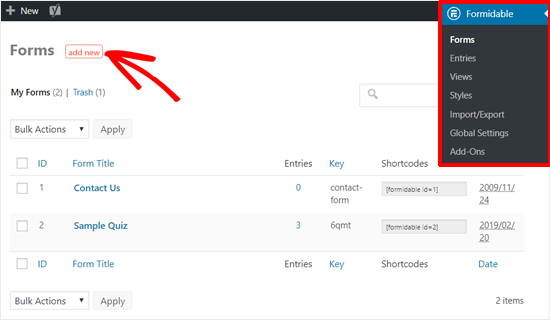
You can now choose how to create the form. You can start with a blank form or template, or you can import it from an XML file.
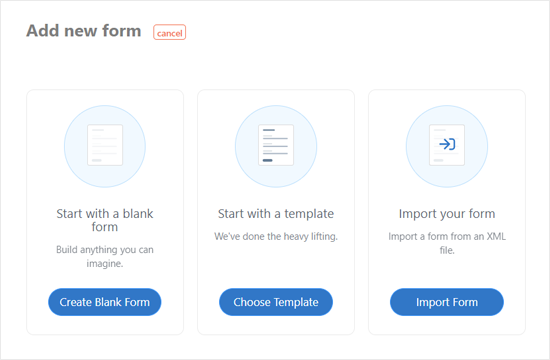
Select the template method, which is the fastest way to create advanced forms. Formidable Forms provides over 20 pre-designed form templates out of the box.
For example, select Real Estate List to create a real estate list. Click Create Form to get started.

A pop-up window appears asking you to enter the form name and description.
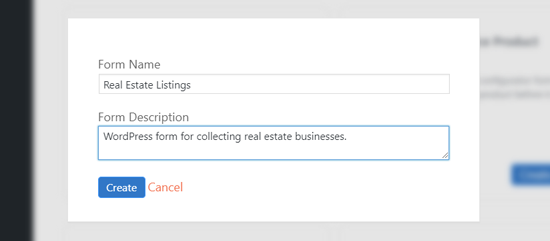
After that, the ready-made property submission form will be loaded.
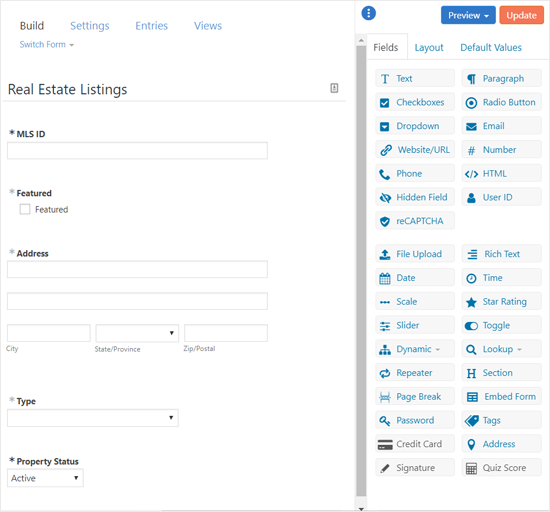
You can review and customize your form using a simple drag-and-drop interface. Click the Update button when you are done.
If you want to create a premium web directory that contains a paid list, you need to connect the form to the payment gateway.
Formidable allows you to collect payments on PayPal, Stripe, and Authorize.net.
This example shows how to integrate PayPal to accept payments. From the dashboard, go to Formidable »Add-ons and install the PayPal standard add-on.
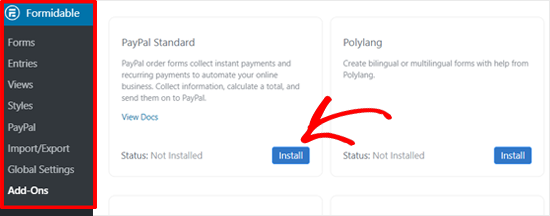
Once the add-on is installed and activated, go to the Formidable »Global Settings and click on the PayPal option. Update your PayPal email address and other settings.
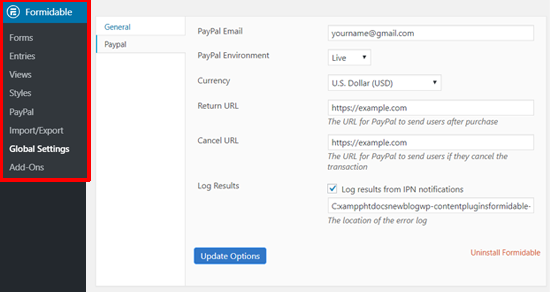
Then reopen each form editor and click the Settings option at the top.

Next, click on the ‘Form Actions’ tab and then select the PayPal icon to add a new action.
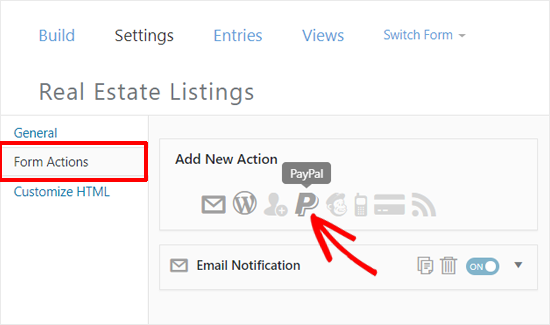
Next, you need to configure your PayPal settings. Add the payment amount, select the payment method (one-time payment, donation, or subscription), select the currency, and then add the return and cancel URLs.
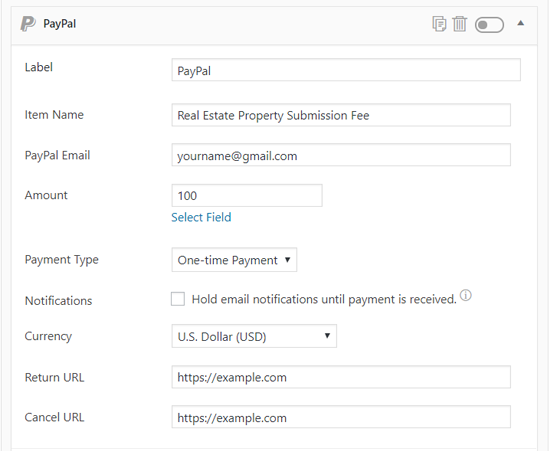
Don’t forget to refresh the form when you’re done.
With the built-in payment option, users must make a payment before submitting the property from the form.
2. Publish Your Form in WordPress
The next step after building a form is to publish it on your website, so users can submit their business details using it.
Visit Pages » Add New from your dashboard to create a new page. After that, name your page and add the Formidable Forms widget to the editor.
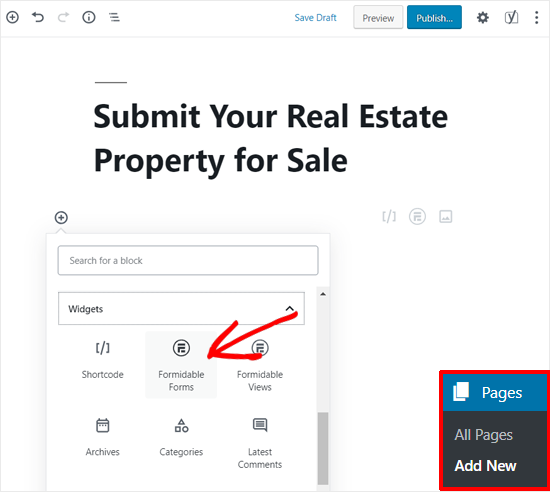
Next, select your form.
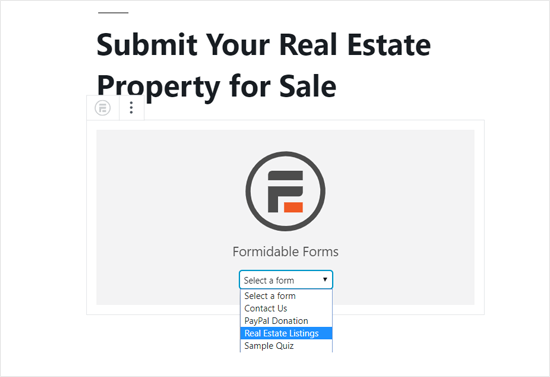
After that, it’s going to load the pre-constructed actual property submission shape into your web page editor.
You also can upload a few useful content materials to the web page. Once done, pass beforehand and post your web page.
Now you may upload the submission form web page in your WordPress navigation menu, or send an e-mail marketing campaign in your e-mail listing to get more form submissions.
The system of gathering facts thru a form may also take a little time, so it’s far higher to make a plan earlier than to start. Alternatively, you may additionally create entries manually out of your dashboard or import from a CSV file.
3. Build Your Web Directory with Formidable Views
After collecting a lot of information, you can use Formidable Views to create a web directory. From the
dashboard, go to Formidable »Views, and click the Add New button.
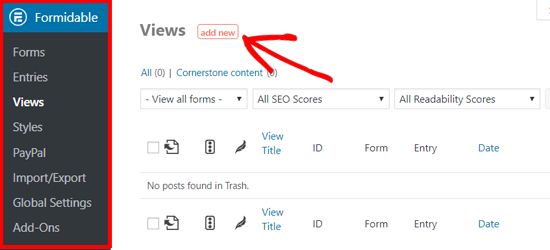
After that, enter a title for your view and choose the form which contains the data you want to display.
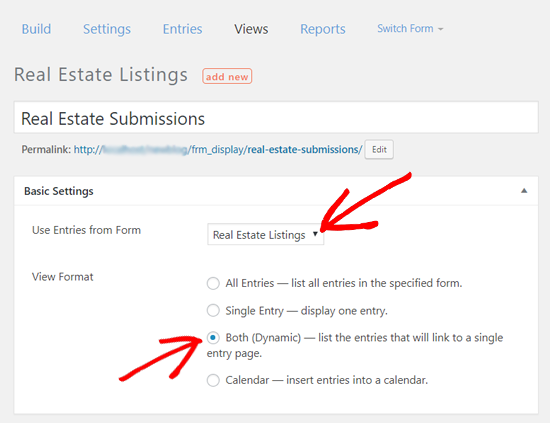
Next, you need to select the display format. You can view all entries in the list, a single entry, list entries with links to individual entry pages, or add entries to your calendar.
For this tutorial, select the Both (Dynamic) -List entries that link to a single entry page option.
If you want to add a search bar to your web directory, paste the following shortcode in the Before Content field.
1[frm-search]

After that, you need to add content to your directory listing in the following format.
|
1
2
3
4
5
6
7
8
|
<div class="listing_info"> <a href="[detaillink]"><img src="[home-image size=thumbnail]" alt=""/></a></div> <div class="listing_list"><strong><a href="[detaillink]">[MLS ID]</a></strong><strong>[address]</strong> <strong>$[listing-price]</strong> [blurb] [bedroom] Bedrooms | [bathroom] Bath |[sqft-living] sq. ft.</div> <div style="clear:both;"></div> |
In the above code, you need to replace the home image, MLS ID, address, listing price, blurb, bedroom, bathroom, and sqft-living with the respective field IDs/keys from your form.
You can find the field IDs/keys in the Customization box on the right-hand side of the page.
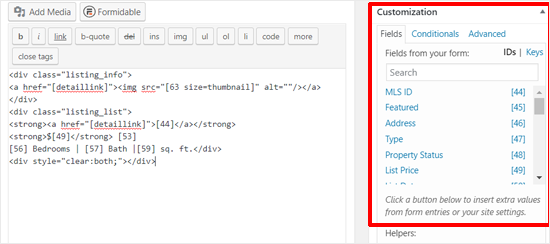
For example, if we want to show the photo uploaded via the ‘Main Photo Upload’ field as the home image, we need to replace the ‘home-image’ with the field ID ‘63’.
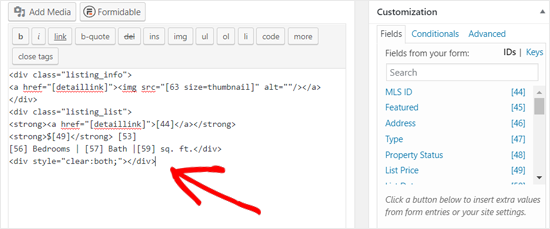
After that, add the following code into Formidable » Styles » Custom CSS to customize the appearance of your web directory.
|
1
2
|
.listing_info{float:left; width:235px; margin-right:10px;} .listings_list img{width:370px;float:right;} |
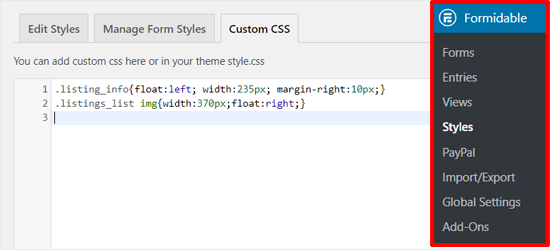
Once done, you can publish your view and preview it.
After that, create a new page for the web directory and add your Formidable View to it.
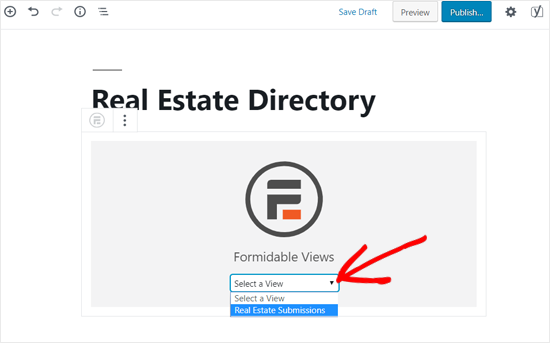
Here is how your real estate directory would look with the default Twenty Nineteen theme.
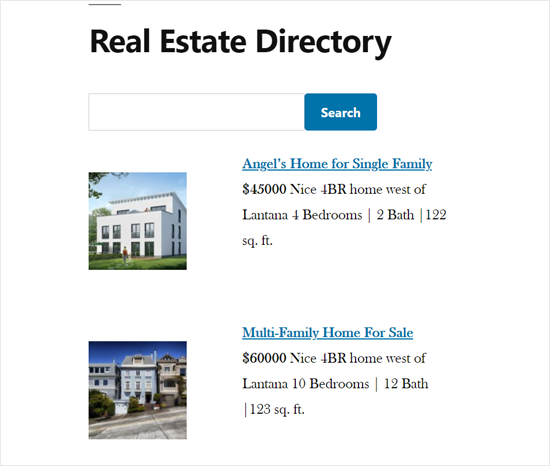
You can further customize and style your Formidable directory with custom CSS, drag-and-drop WordPress page builder plugins, or styling plugins such as CSS Hero.
Method 2: Using Business Directory Plugin:
The second way is to actually use the Business Directory plugin. Please note that the main plugin is free, but many features require you to purchase the PRO version of the plugin.
First, install and activate the Business Directory plugin. After activation, the plugin will create a new WordPress page and ask for permission to add the business directory shortcode to it.
Click Create a required page to create a directory page.
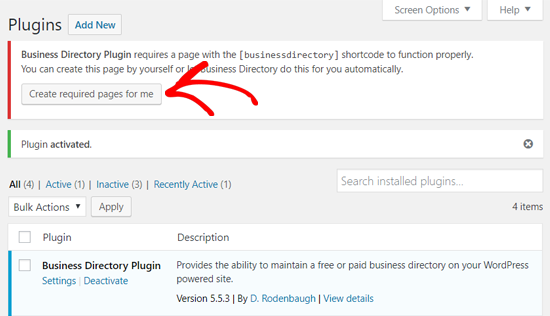
Once done, the Business Directory plugin will add a new page called ‘Business Directory’ automatically.
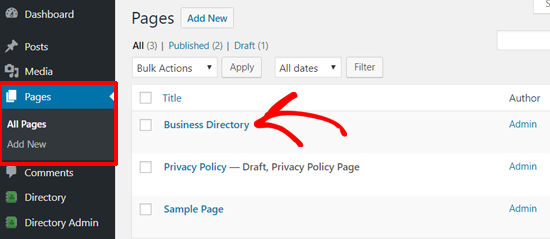
This page is the primary page that the Business Directory Plugin uses to display directories on your website, so do not delete or hide it.
You can then manage your plugin settings from the Directory Management menu on your dashboard.
Go to Directory Management »Manage Options to configure the plugin’s main settings. “General” settings include permalink settings, directory search options, reCAPTCHA, registration options, and more.
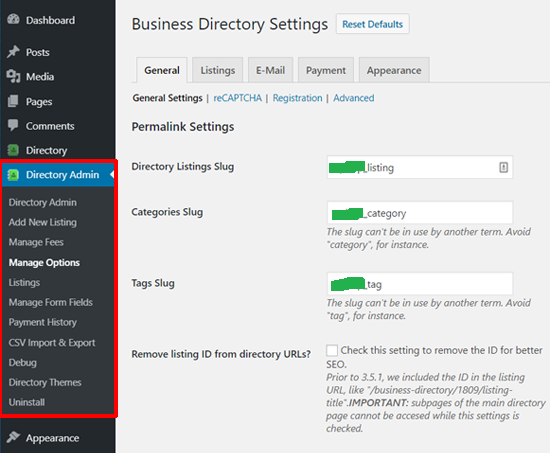
As you can see in the screenshot above, there are list, email, payment, and appearance settings. You can review them all one by one and make changes as needed.
Then go to Directory Management »Manage Form Fields to customize the form fields. From here, you can add or edit the fields that appear on the directory submission form.
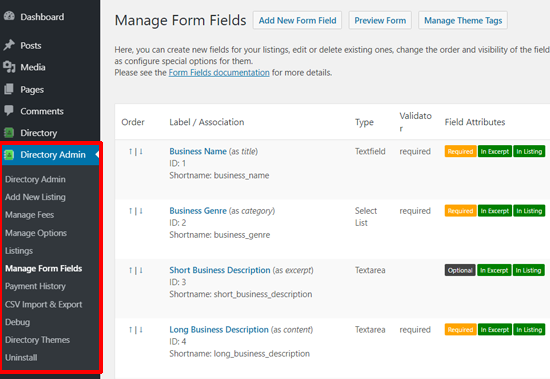
Next, you need to create some categories of directories.
To do this, go to Directory »Directory Categories. You need to create at least one category so that users can use it when submitting a list.
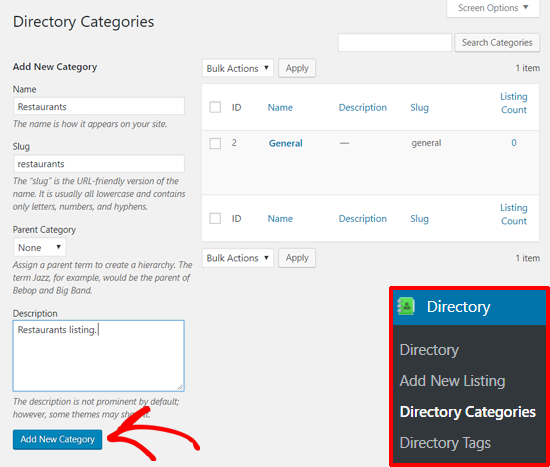
After creating the category, you can go to the Directory »Add New Entry to create a new entry.
You should now see the Add New Entry page, similar to the traditional WordPress editor. Enter a title for the list and add a brief description of the list.
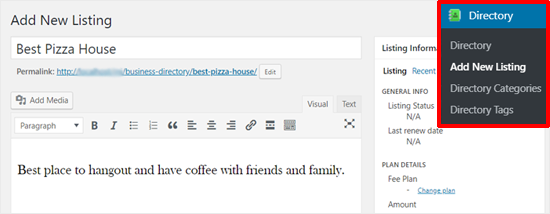
After that, scroll down to the ‘Directory Listing Fields/Images’ section and add your business details including website address, phone number, email, etc.
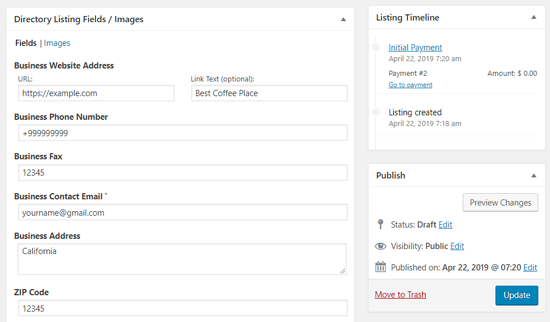
To add images, you will need to click on the Images link first. Then, you can upload images from your computer or simply drop them in the image box.
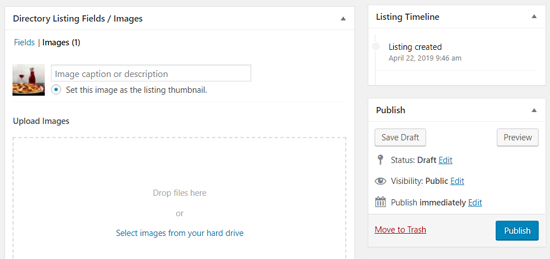
Next, you will need to choose an appropriate category for your listing.
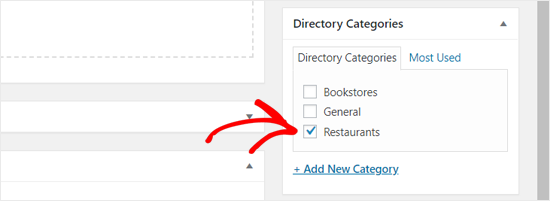
Once done, you can go ahead and publish your directory.
Now you can preview your web directory page on your website. Your web directory would look like the screenshot below with the default WordPress theme Twenty Nineteen.
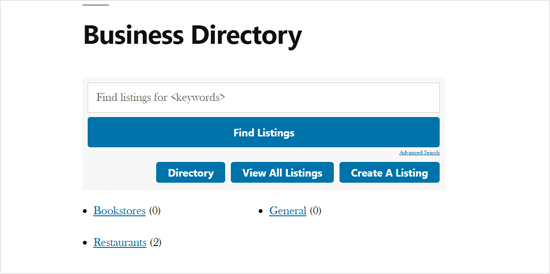
As a website administrator, you could create a list manually out of your dashboard. Your customers also can publish a list to your listing for the usage of a form. The submission form may be accessed via way of means of clicking on the `Create A Listing` button.
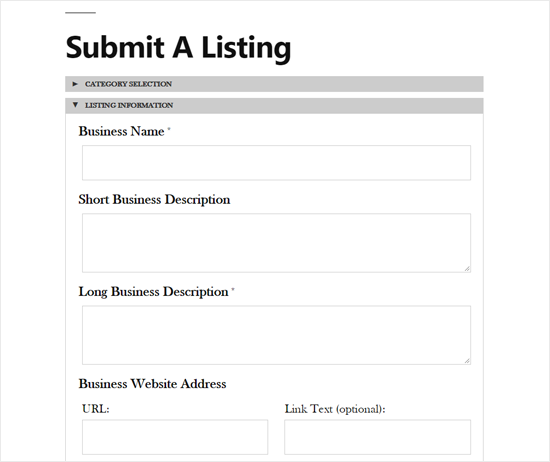
The user-submitted listing items will be saved in the Directory » Directory page as pending listing, so you can manually review and check the listing for quality.
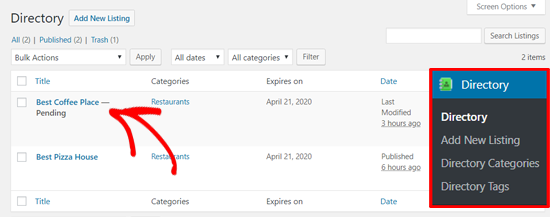
Once done, they will appear on your business directory page.
Accepting Payments for Directory Listings
You can use the Business Directory Plugin to accept payments for listings in your web directory. By default, the plugin only comes with Authorize.net as the payment gateway.
Other payment gateways such as PayPal and Stripe are available as separate add-ons that can be purchased from the plugin website.
To enable payment options in your corporate directory, you need to go to the Directory Management »Manage Options page and click the Payments tab.
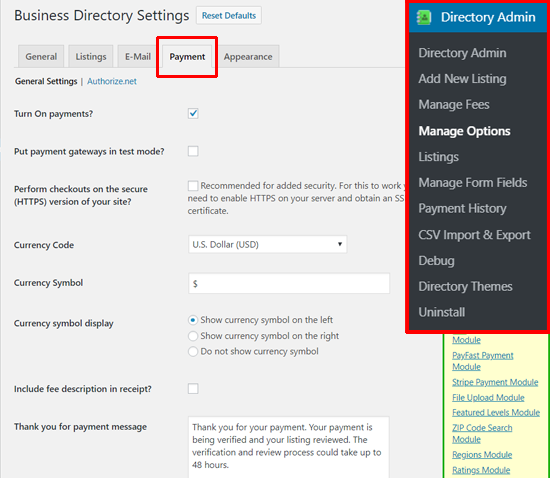
The first option on the Payment Settings screen of the Payment Settings page is a checkbox to enable payment. If your site isn’t ready yet, you can check the checkbox next to the payment gateway in test mode. chance.
In the next step, select a currency and add a thank-you message for your payment.
When you have finished configuring payment options, click the Save Changes button to save your settings.
You can now connect your directory to your payment provider. If no other payment gateway add-on plugin is installed, you will only see Authorize.net as the default payment gateway option.
Click the Authorize.net link and enter your login ID and transaction key to activate it.
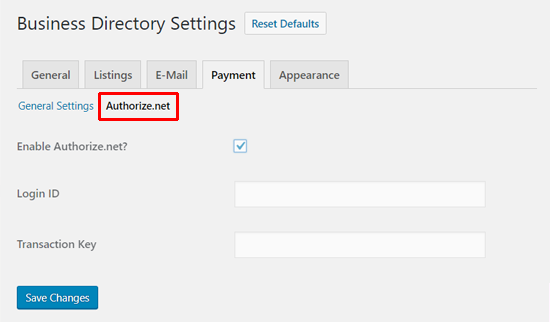
Since you’re requiring payments, you may want to set up listing charges. This may be completed by going to Directory Admin » Manage Fees. There you could create special list plans, setup charges, and list duration for every plan and save your changes.
That`s all! Your web directory is now prepared to simply accept paid listings. We request you to discover different alternatives within side the plugin`s settings in addition to optimization of your web directory.
I hope this article helped you create a web directory using WordPress.
Leave a Reply